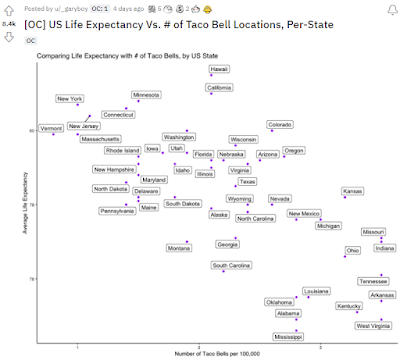Many thanks to my colleague, Andrew Caswell, for sharing this Reddit post with me:
 |
https://www.reddit.com/r/dataisbeautiful/comments/s75sm7/oc_us_life_expectancy_vs_of_taco_bell_locations/ |
BETTER STILL: I downloaded and organized all of the fast-food data and mortality data and put it in one spreadsheet for you all. Do All The Correlations! Teach your students about Bonferroni corrections! Figure out the fast-food restaurant that correlates the most strongly with mortality!
PS: Did you know that there is an option to download data from a website in Excel?
The fast-food data was presented in an embedded, scrolly table, and that Excel option made it easy-peasy to download.


Comments
Post a Comment